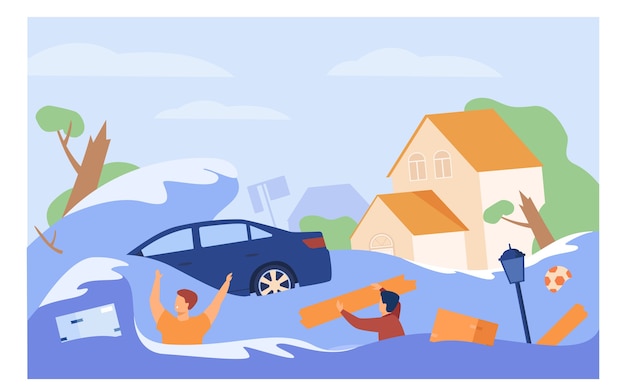

Floods are the world’s most common natural disaster.
Floods can occur in both developed and developing countries.
Floods can cause extensive damage to infrastructure, agriculture, and homes.
Floods can be caused by heavy rainfall, melting snow, or dam failures.
Floods can occur suddenly, without much warning.
Floods can result in the displacement of thousands of people.
Floodwaters can contain hazardous substances.
Floods can cause outbreaks of waterborne diseases.
Floods can lead to loss of livestock and agricultural crops.
Floods can cause erosion and change the landscape.
Floods can be devastating for wildlife habitats and biodiversity.
Floods can create challenges for rescue and relief operations.
Floods can have long-term economic impacts on affected regions.
Floods can worsen existing social inequalities in vulnerable communities.
Floods can disrupt transportation networks and hinder access to essential services.
Floodplains play a vital role in mitigating flood risks.
Climate change can increase the frequency and intensity of floods.
Flood forecasting and early warning systems are essential in minimizing flood damages.
Effective urban planning can help reduce flood risks in cities.
Nature-based solutions, such as wetland restoration, can help prevent or mitigate floods.
Floods can be a natural part of a river’s ecosystem.
Historical flood records can provide valuable insights into flood patterns.
Flash floods can occur within minutes or hours of heavy rainfall.
Flooding in coastal areas can be caused by storm surges or tsunamis.
Floods can have psychological effects on individuals and communities.
Floods can temporarily disrupt the supply of clean drinking water.
Floods can lead to increased insurance costs in flood-prone areas.
Flood prevention measures, such as levees and flood walls, can sometimes have unintended consequences.
Floods can highlight the need for better land-use planning and zoning regulations.
Climate adaptation strategies should include flood risk management.
Flood-prone areas should prioritize the development of evacuation plans.
Floods can be an opportunity for communities to come together and support one another.
Floods can cause power outages, disrupting communication and basic services.
Public awareness campaigns can help educate communities about flood risks and safety measures.
Flood insurance can provide financial protection for homeowners in flood-prone areas.
Floods can have significant impacts on cultural heritage sites.
Floods can lead to the contamination of drinking water sources.
Flood-prone areas should consider implementing green infrastructure solutions, such as rain gardens and permeable pavements.
Climate change adaptation should be integrated into flood risk management strategies.
Flood-prone regions should invest in flood forecasting and monitoring technologies.
Flood mitigation measures should consider the protection and conservation of natural ecosystems.
Flood damage assessments can help prioritize recovery efforts.
Flood-prone cities should invest in resilient infrastructure to withstand future flood events.
Flood response plans should include provisions for vulnerable populations, such as the elderly and disabled.
Floods serve as a reminder of the power and unpredictability of nature.
Around the world, coffee enthusiasts enjoy Monin coffee concentrate since it is a multipurpose product. Conveniently combining…
The Importance of Choosing the Right Shower for Your Bathroom Renovating your bathroom can be…
Usain Bolt holds the record for the fastest 100-meter sprint in history.Bolt was named Sportsman…
Love is in the air... and it smells suspiciously like chocolate!Roses are red, violets are…
Life's a beach, take a picture and relax.Sun, sand, and salty kisses. That's what beach…
Hungary is home to the largest thermal water cave system in the world.The Rubik's Cube…